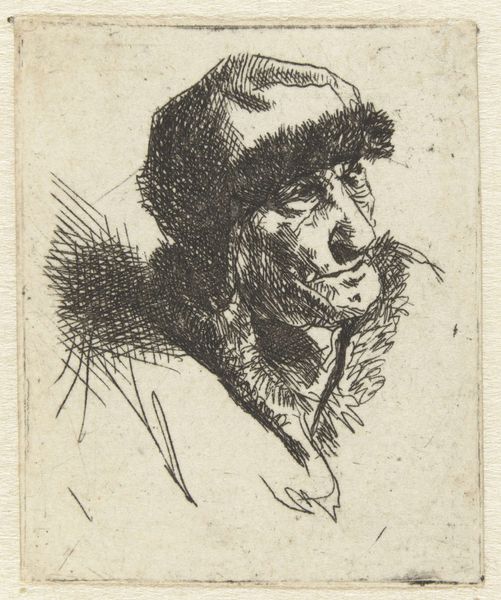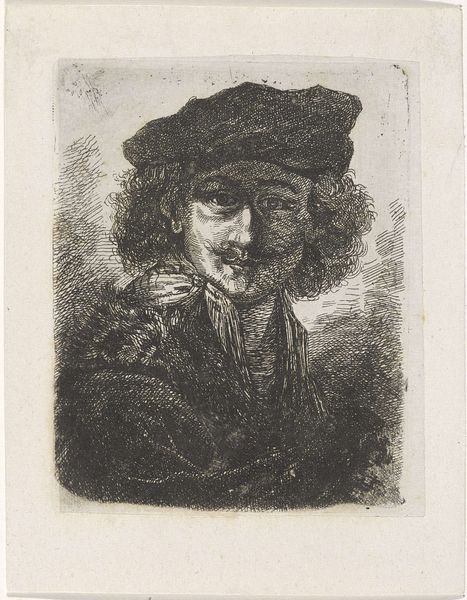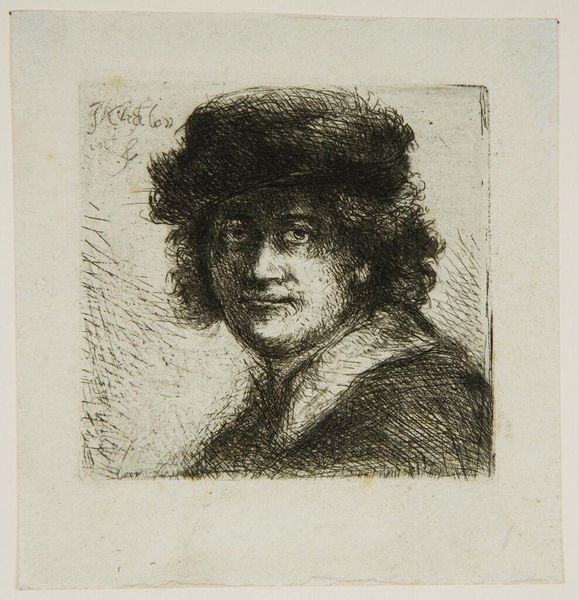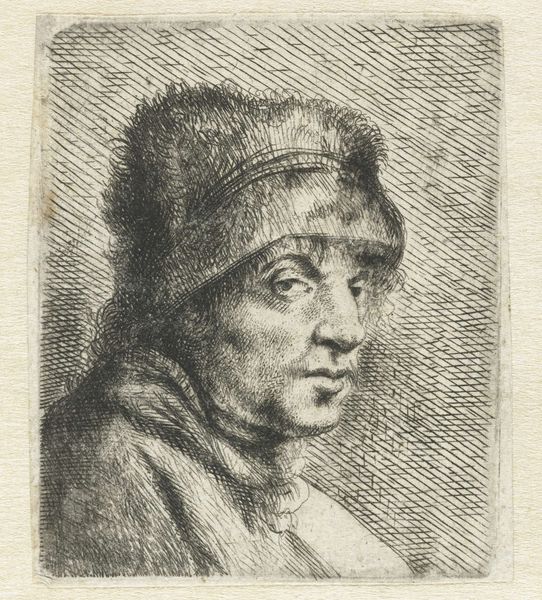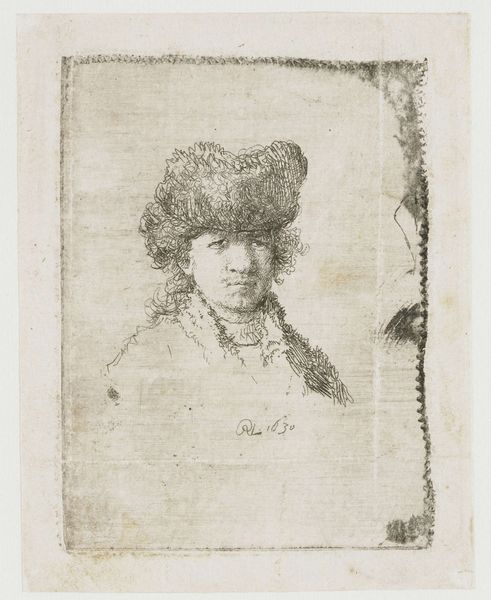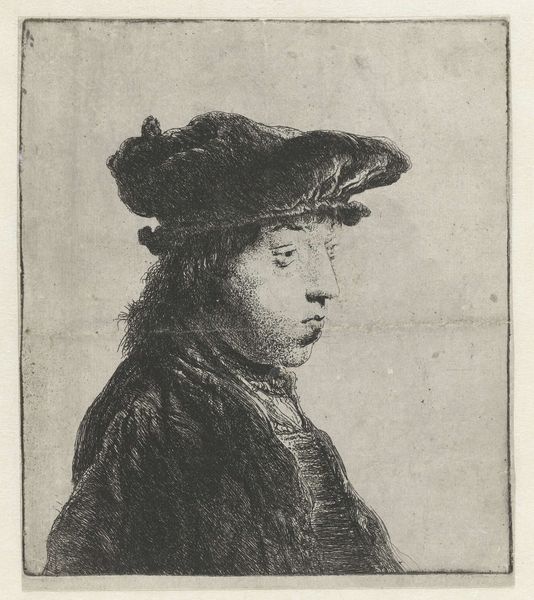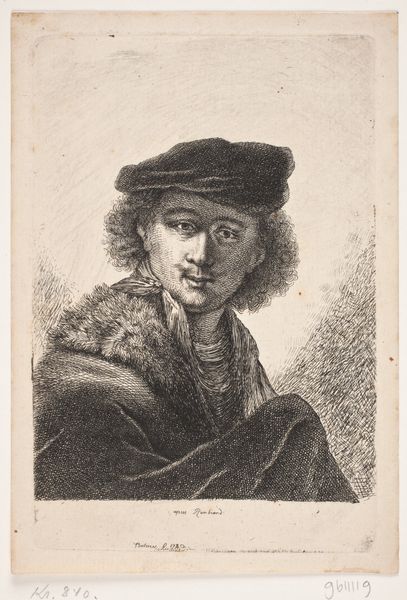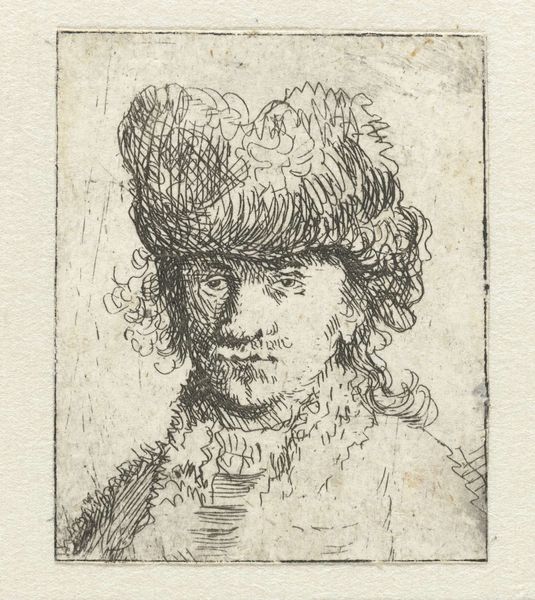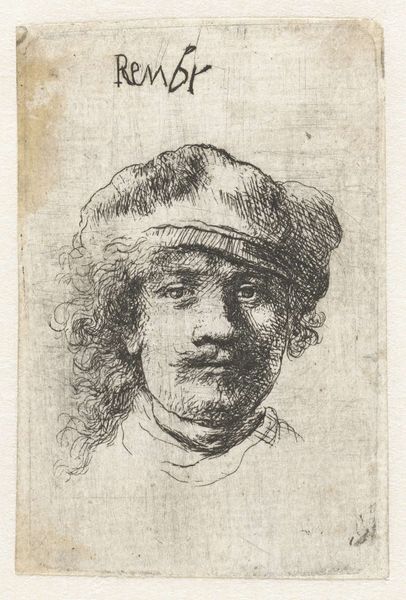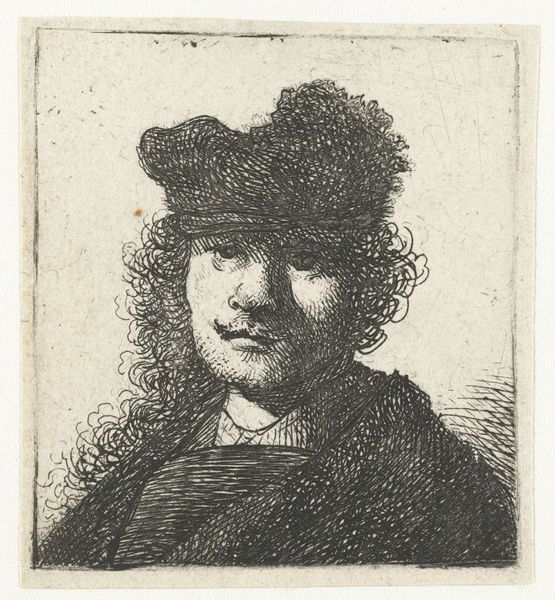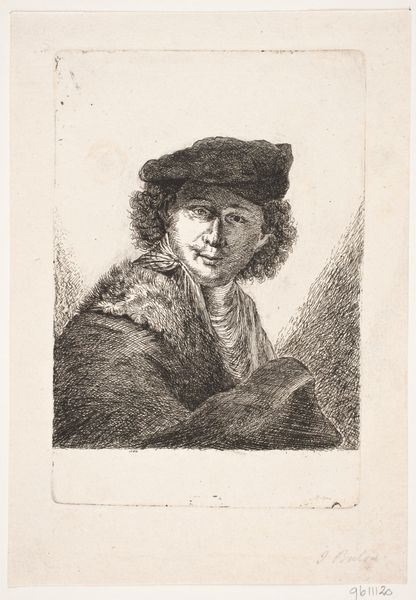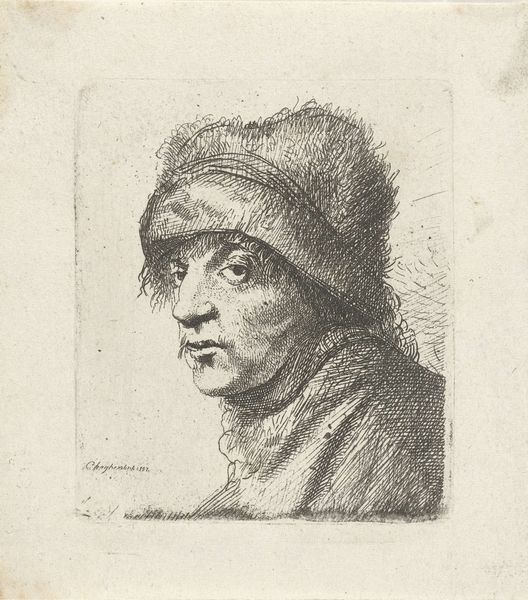
etching
#
portrait
#
baroque
#
dutch-golden-age
#
etching
#
line
#
realism
Dimensions: height 64 mm, width 58 mm
Copyright: Rijks Museum: Open Domain
Curator: Look at this intimate etching, "Young man in cap: bust", created by Rembrandt van Rijn in 1631, currently housed in the Rijksmuseum. Editor: It's strikingly dramatic, wouldn't you agree? The stark contrast between light and shadow gives the subject a really intense, almost theatrical presence. Curator: Absolutely. This piece reflects the growing demand for portraiture amongst the rising Dutch middle class. Rembrandt was adept at capturing individual character, catering to a new market keen to see themselves represented. Editor: The way Rembrandt plays with light is phenomenal here; observe how the strong light source obscures half his face, creating this aura of mystery, enhancing the expressiveness of his visible eye and furrowed brow. The textural variation is impressive too, achieved just with simple lines in various densities. Curator: And this technique aligns with the baroque period and Rembrandt's distinct use of realism—making his figures identifiable and relatable to viewers of the time, further democratizing art through familiar imagery. Editor: Democratization, or a very controlled self-expression. The meticulous etching is balanced carefully, with almost mathematical detail; that cap, for example, or his curls, constructed through individual tiny marks in a pattern that speaks of depth beyond pure representation. Curator: You're right, and consider also the socio-economic implications: while the Dutch Golden Age was known for increased economic prosperity, inequality persisted. This work likely reflects this complexity—a young man portrayed with subtle nuances, a study in light and shadow perhaps alluding to hidden complexities beneath outward appearances. Editor: Yes. There’s something enduringly potent about Rembrandt's attention to rendering minute shifts, revealing as much as obscuring in the human form; he elevates, or maybe unearths an essential innerness. I see him always looking. Curator: A masterclass, for sure. It’s a lens into a world in transition, rendered exquisitely, isn't it? Editor: Indeed, it speaks silently now as it did loudly then.
Comments
No comments
Be the first to comment and join the conversation on the ultimate creative platform.
